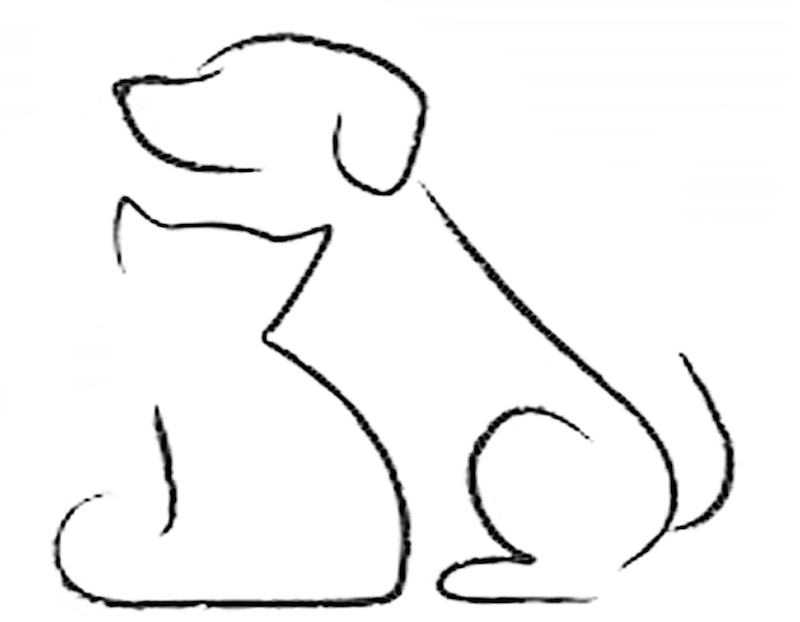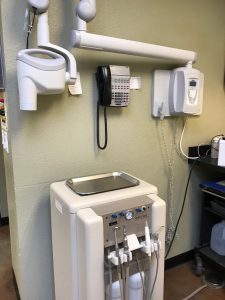Call to schedule your pet’s dental: 530-888-8788
Our dogs are living longer now than in the past. Today, we have better preventive medicine (e.g., vaccinations and heartworm preventives) and better ways to diagnose and treat many diseases. Now we are seeing more animals whose most severe medical problems are dental problems. To prevent oral disease, which is the number one health problem diagnosed in pets, it is essential to provide our pets with good dental care, both professionally and at home.
Dental disease in dogs
Plaque: Dogs rarely get cavities, but are much more prone to gum disease and excess tartar build-up on the teeth. Food particles and bacteria collect along with the gumline forming plaque. Routine home care can remove this plaque.
Tartar: If plaque is not removed, minerals in the saliva combine with the plaque and form tartar (or calculus) which adheres strongly to the teeth. Plaque starts to mineralize 3-5 days after it forms. The tartar is irritating to the gums and causes an inflammation called gingivitis. This can be seen as reddening of the gums adjacent to the teeth. It also causes bad breath. At this point, it is necessary to remove the tartar with special instruments called scalers, and then polish the teeth.
Periodontal Disease: If the tartar is not removed, it builds up under the gums. It separates the gums from the teeth to form “pockets” and encourages even more bacterial growth. At this point, the damage is irreversible, and called “periodontal” disease. It can be very painful and can lead to loose teeth, abscesses, and bone loss or infection. As bacterial growth continues to increase, the bacteria may enter the bloodstream. This can cause infection of the heart valves (endocarditis), liver, and kidneys. If treated by your veterinarian with special instruments and procedures, periodontal disease can be slowed or stopped.
What is included in a good dental care program?
A good dental care program includes:
- Regular visits to your veterinarian, which include an oral exam
- Veterinary dental cleaning as advised
- Daily home dental care
Oral Exams by Your Veterinarian: A thorough dental exam can identify potential problems such as plaque and tartar build-up, gingivitis, periodontal disease, and fractured or abscessed teeth. During an oral exam your veterinarian will:
- Examine the animal’s face and head for asymmetry, swelling, or discharges.
- Examine the outside surfaces of teeth and gums, and the “bite”.
- Open the mouth to examine the inner surfaces of the teeth and gums and the tongue, palates, oral mucosa, tonsils, and ventral tongue area.
- Palpate and assess the size, shape, and consistency of the salivary glands and the lymph nodes in the neck.
Dental Cleaning by Your Veterinarian: To prevent dental disease, your dog needs routine dental care at home. But to perform good home care, you need to start with clean teeth. Brushing will remove plaque but not tartar. So if your dog’s teeth have tartar, it is necessary for your veterinarian to remove it and polish the teeth. This professional veterinary dental cleaning is often called prophylaxis or “prophy.” A routine dental cleaning consists of:
- Anesthetizing your dog.
- Taking radiographs (x-rays) to assess the health of all of the teeth and bones of the mouth.
- Flushing the mouth with a solution to kill the bacteria.
- Cleaning the teeth with handheld and ultrasonic scalers. All calculus is removed from above and below the gumline. This is extremely important and can only be done if the animal is under anesthesia.
- Using a disclosing solution to show any areas of remaining calculus which are then removed.
- Polishing the teeth to remove microscopic scratches.
- Inspect each tooth and the gum around it for any signs of disease.
- Flushing the mouth, again, with an antibacterial solution.
- Optionally, apply a dental agent to retard plaque build-up.
- Recording any abnormalities or additional procedures on a dental chart.
- Determining the best follow-up and home dental care program for your dog.
Daily Home Oral Care: Home oral care includes routine examinations of your dog’s mouth and brushing her teeth.
Home oral exam: As you care for your dog’s mouth, look for warning signs of gum disease such as bad breath, red and swollen gums, a yellow-brown crust of tartar around the gum line, and pain or bleeding when you touch the gums or mouth. You should also watch for discolored, fractured, or missing teeth. Any bumps or masses within the mouth should also be checked by your veterinarian.
Daily brushing: Regular brushing of your dog’s teeth is a very important preventive for oral and other diseases. A step-by-step procedure for providing this care is found in our article Brushing Your Dog’s Teeth.
Mechanical removal of plaque: Studies show that hard kibbles are slightly better than canned food at keeping plaque from accumulating on the teeth. There are veterinary dentist-approved foods and treats on the market that has shown that dogs eating these foods have less plaque and tartar build-up.

